
Whenever the issue of protection and conservation of the environment crops up, one should not be thinking and talking only about the survival of the humankind. The survival and sustenance of the flora and fauna is of equal significance. One should not be seen as dependent on the other, rather a feeling of mutual co-existence should be all pervading.
2. It may not be out of place to state that the consumption pattern or the utilization practices of the human beings should be such that enough resources are left to take care of the needs of the future generations. Every now and then the incidents of the Elephants, Leopards, or the Tigers straying into the human habitations hit the headlines. Hectic and at times, merciless action takes place on the part of ‘trained’ Forest officials as also untrained villagers either to have an exciting glimpse of the animal or to capture the helpless creature altogether. Though the aim of such operations is to rescue an animal and to take it to a safe dwelling place or a Zoo, the fact remains that avoidable casualties do take place.
3. Whether it is a case of the Royal Bengal Tiger intruding into the villages of the Sunderbans or the Elephants entering and damaging the houses and the crops in the villages of Assam or the hills of North Bengal or the frequent spotting of the Leopards in the green areas of Mumbai, it is not a question of attack or the intrusion by the animals. But these could be termed as the valiant acts of assertion of the rights by the three species of animals vis-à-vis the acts of real intrusion into their established habitat by the greedy human beings. A number of reports have indicated that the animals in the mentioned locations have been averse to the human settlements The human beings ,on the other hand, by the sheer virtue of their muscle and mechanical power ,mostly, are in a position to suppress and subjugate the animals. When the animal instinct among the human beings crosses all limits, the actual and bonafide sons and daughters of the soil are left with no alternative but to react and react vehemently and justifiably.(other instances of the animals gradually losing their habitat could be the Monkeys, Peacocks and the Deer in the Delhi situation, the Rhinos at Kaziranga ,Asiatic Lions in the Gir forest of Gujarat etc.)
4. It is not only the tussle for a living or a habitat between the animals and the human beings but it is a question of showing love and care for the natural endowments indiscriminately gifted by the Almighty. At this juncture, one should not be biased towards the basic Hindu philosophy of showing reverence to the plants and animals. It goes without saying that for generations altogether, plants, such as, Peepal, Banyan, Tulsi, Banana, Mango etc. and the animals like Cow, Bull, Lion, Tiger, Elephant, Monkey, Rats, Cobra Snakes etc. are being flawlessly worshipped. Also the early morning ritual of offering water to the Sun God and the Tulsi plant not only gives us the requisite faith and strength but such a practice also teaches us the lesson to do everything possible so as to preserve the plants and trees, so vital for our very survival.
5. To further substantiate, I wish to narrate an actual episode experienced very recently at the Mahavir Vanasthali in Chanakyapuri. While taking a brisk walk in the morning, a man none other than the standing of a priest in his usual attire, cautioned me to guard against the possible attack by a Cobra snake. A number of loiterers, way-farers and the lovers thronged the place in no time. As a result, the poor snake had to quickly hide and take shelter behind the bushes in one secluded corner of the garden. Though a number of human beings began crowding the place by giving up their normal duties relating to the maintenance of the garden, the birds and insects of various varieties kept on chirping, playing and flying, thus giving an impression as if nothing extra ordinary had happened. Probably, they were convinced that they as also the Cobra had every right to venture into the garden situated next to a ridge. Where else are they supposed to go?
I must confess that I am not a super human being. The news about spotting of a cobra initially did scare me. Later, while moving towards my usual exercising canopy, I felt concerned and careful. However, in no time, began my daily routine of Yogasana. When I reached the climax by resorting to the Bhujangasana posture, I was reminded of the Cobra instinct among the human beings who are not only determined to wage a war against the idea of peaceful co-existence with the plants and animals but also spare no efforts in asserting their supremacy. Is it justifiable, sensible and sustainable? On the World Environment Day, let us prick our mind and attempt to find an answer.
6. Coming to the theme, “Kick the carbon habit”, I am firmly and humbly of the view that the theme should be specific to a situation and it should not be decided by an organization or a body otherwise dominated by a power herself responsible for perpetuating an unsustainable habit leading to more and more of global warming. It goes without saying that the developing countries are always blamed for not only polluting the atmosphere but also contributing substantially to increasing the carbon content. It is a known fact that due to historical reasons coupled with demographic constraints, the developing countries are compelled to use not only outdated technologies but they also become happy dumping grounds for the pollutants and the effluents which cannot be dumped in the serene surroundings of the powers that matter. Also the developing countries are persuaded and cajoled beyond limits to become signatory to a Convention or Protocol relating to reduction of carbon content even when the shrewd members of the dictating and not the developed world shy away from same for the reasons best known to them.
7. The latest thinking being put forward is that the populous yet remarkably vibrant and happening economies are not only responsible for the so-called food crisis the world over but they also create enough vegetative and non-vegetative garbage at home which increases the percentage of C02 in the atmosphere by the natural bacterial decomposition. Yet at the same time the same developing economies become essential guinea pigs for the latest, outdated as well as unwanted automobile inventions and innovations. Whether such a design increases or decreases the overall global warming is anybody’s guess.
8. In addition to the climatic changes, the evil designs of the multinationals also lead to a drastic change in the consumption pattern of the people of the economies which, apart from having the requisite potential for sustainable growth also have a healthy saving instinct. Needless to say, when the deceptive automobile beauties emerge on the scene in the distinguished company of the heavily made up faces from a collectivity called the fair sex, the novae rich cannot possibly resist their temptation. Thus the propensity and capacity to save gets confined to the pavilion, if one is permitted to borrow some literary insights from the just concluded and much fancied IPL cricket series.
9. Coming to the bare statistics, according to a study quoted by one of the English language TV channels, one kilogram of CO2 is emitted when a car undertakes a journey of 6 kms. Similar level of emission is caused by the railways while covering a distance of 12 kms. As regards the decay and degrading period, the cotton takes one to five months, paper needs 2 to 5 months, the plastic bags (probably meaning polythene bags) will require 10 to 20 years, the photo film 20 to 30 years, while the tins would require much more time. Let us leave aside many non-biodegradable substances, such as, glass materials, batteries, outdated computers and electronic items, radio-active wastes, hospital wastes etc made popular very religiously by each one of us.
10. When we move our attention to the mitigation aspect, enough awareness has been created all over the world in the last two decades and more so, in our own country, having fantastic resources and practically all the spots and all the climatic zones, an avid visitor or a tourist looks for. But despite the initiatives triggered by the government, non-government organizations and the noteworthy and timely interventions by the apex court, there is still a wide gap or manifest cleavage between what we need and what we actually go on to acquire. The environment education should not therefore be limited to the young and emerging generation. Rather it must become a Gita, Quran, Bible and the Gurugranth Sahib for all the forward looking Indians who not only hope but believe that the Mother India has all the potential to be an economic superpower after having excelled in many other challenging domains.
11. The politics of usage of carbon based fuels or the fossil fuels (firewood, coal, oil, natural gas etc.) also needs to be looked into. There are a handful of countries having abundance of such resources, yet they sustain and prolong the practice of import of such items possibly with the intent to finish the resources of other countries. When the D-Day comes closer, these handful countries will emphasize their evil designs to dictate their own terms. Thus the present day suppliers would be compelled to become future users ONLY but they will have to pay an indomitable and unimaginable price.
12. The alternative and renewable sources of energy should logically draw our attention next. If the consumption of coal and POL is reduced, the alternative sources such as gas, hydel, wind or nuclear power should automatically act as substitute. But in real life that doesn’t happen. Hence, apart from thinking, innovating and exploring the possibilities, it is our bounden duty also to sincerely and meticulously work for reducing the usage of the plants, machineries and automobiles needing conventional, yet, expensive fuel.
Why can’t we walk to study, work or office once a week or use public transport whenever it is a relatively light day? Also why not to replicate the system of no-vehicle zones being practiced in some countries in an earmarked area, once a week? In lighter vein, why should we expect a pollution causing machine or automobile in dowry? Instead, the people of fair sex should take a pledge not to marry a person needing the comfort of a vehicle requiring conventional fuel.
13. To sum up, I presume, a large number of saplings will be planted by the serious as also hypocritical environment conscious individuals during the course of the World Environment Day or the week or the fortnight following it. How many of these saplings will be actually maintained and looked after, that should be our immediate area of attention. MERE TALKING ABOUT REDUCING THE CARBON CONTENT WILL NOT DO, A SINCERE AND SUSTAINABLE EFFORT BY INVOLVING THE PEOPLE AT THE GRASSROOTS IS VERY MUCH CALLED FOR.
2. It may not be out of place to state that the consumption pattern or the utilization practices of the human beings should be such that enough resources are left to take care of the needs of the future generations. Every now and then the incidents of the Elephants, Leopards, or the Tigers straying into the human habitations hit the headlines. Hectic and at times, merciless action takes place on the part of ‘trained’ Forest officials as also untrained villagers either to have an exciting glimpse of the animal or to capture the helpless creature altogether. Though the aim of such operations is to rescue an animal and to take it to a safe dwelling place or a Zoo, the fact remains that avoidable casualties do take place.
3. Whether it is a case of the Royal Bengal Tiger intruding into the villages of the Sunderbans or the Elephants entering and damaging the houses and the crops in the villages of Assam or the hills of North Bengal or the frequent spotting of the Leopards in the green areas of Mumbai, it is not a question of attack or the intrusion by the animals. But these could be termed as the valiant acts of assertion of the rights by the three species of animals vis-à-vis the acts of real intrusion into their established habitat by the greedy human beings. A number of reports have indicated that the animals in the mentioned locations have been averse to the human settlements The human beings ,on the other hand, by the sheer virtue of their muscle and mechanical power ,mostly, are in a position to suppress and subjugate the animals. When the animal instinct among the human beings crosses all limits, the actual and bonafide sons and daughters of the soil are left with no alternative but to react and react vehemently and justifiably.(other instances of the animals gradually losing their habitat could be the Monkeys, Peacocks and the Deer in the Delhi situation, the Rhinos at Kaziranga ,Asiatic Lions in the Gir forest of Gujarat etc.)
4. It is not only the tussle for a living or a habitat between the animals and the human beings but it is a question of showing love and care for the natural endowments indiscriminately gifted by the Almighty. At this juncture, one should not be biased towards the basic Hindu philosophy of showing reverence to the plants and animals. It goes without saying that for generations altogether, plants, such as, Peepal, Banyan, Tulsi, Banana, Mango etc. and the animals like Cow, Bull, Lion, Tiger, Elephant, Monkey, Rats, Cobra Snakes etc. are being flawlessly worshipped. Also the early morning ritual of offering water to the Sun God and the Tulsi plant not only gives us the requisite faith and strength but such a practice also teaches us the lesson to do everything possible so as to preserve the plants and trees, so vital for our very survival.
5. To further substantiate, I wish to narrate an actual episode experienced very recently at the Mahavir Vanasthali in Chanakyapuri. While taking a brisk walk in the morning, a man none other than the standing of a priest in his usual attire, cautioned me to guard against the possible attack by a Cobra snake. A number of loiterers, way-farers and the lovers thronged the place in no time. As a result, the poor snake had to quickly hide and take shelter behind the bushes in one secluded corner of the garden. Though a number of human beings began crowding the place by giving up their normal duties relating to the maintenance of the garden, the birds and insects of various varieties kept on chirping, playing and flying, thus giving an impression as if nothing extra ordinary had happened. Probably, they were convinced that they as also the Cobra had every right to venture into the garden situated next to a ridge. Where else are they supposed to go?
I must confess that I am not a super human being. The news about spotting of a cobra initially did scare me. Later, while moving towards my usual exercising canopy, I felt concerned and careful. However, in no time, began my daily routine of Yogasana. When I reached the climax by resorting to the Bhujangasana posture, I was reminded of the Cobra instinct among the human beings who are not only determined to wage a war against the idea of peaceful co-existence with the plants and animals but also spare no efforts in asserting their supremacy. Is it justifiable, sensible and sustainable? On the World Environment Day, let us prick our mind and attempt to find an answer.
6. Coming to the theme, “Kick the carbon habit”, I am firmly and humbly of the view that the theme should be specific to a situation and it should not be decided by an organization or a body otherwise dominated by a power herself responsible for perpetuating an unsustainable habit leading to more and more of global warming. It goes without saying that the developing countries are always blamed for not only polluting the atmosphere but also contributing substantially to increasing the carbon content. It is a known fact that due to historical reasons coupled with demographic constraints, the developing countries are compelled to use not only outdated technologies but they also become happy dumping grounds for the pollutants and the effluents which cannot be dumped in the serene surroundings of the powers that matter. Also the developing countries are persuaded and cajoled beyond limits to become signatory to a Convention or Protocol relating to reduction of carbon content even when the shrewd members of the dictating and not the developed world shy away from same for the reasons best known to them.
7. The latest thinking being put forward is that the populous yet remarkably vibrant and happening economies are not only responsible for the so-called food crisis the world over but they also create enough vegetative and non-vegetative garbage at home which increases the percentage of C02 in the atmosphere by the natural bacterial decomposition. Yet at the same time the same developing economies become essential guinea pigs for the latest, outdated as well as unwanted automobile inventions and innovations. Whether such a design increases or decreases the overall global warming is anybody’s guess.
8. In addition to the climatic changes, the evil designs of the multinationals also lead to a drastic change in the consumption pattern of the people of the economies which, apart from having the requisite potential for sustainable growth also have a healthy saving instinct. Needless to say, when the deceptive automobile beauties emerge on the scene in the distinguished company of the heavily made up faces from a collectivity called the fair sex, the novae rich cannot possibly resist their temptation. Thus the propensity and capacity to save gets confined to the pavilion, if one is permitted to borrow some literary insights from the just concluded and much fancied IPL cricket series.
9. Coming to the bare statistics, according to a study quoted by one of the English language TV channels, one kilogram of CO2 is emitted when a car undertakes a journey of 6 kms. Similar level of emission is caused by the railways while covering a distance of 12 kms. As regards the decay and degrading period, the cotton takes one to five months, paper needs 2 to 5 months, the plastic bags (probably meaning polythene bags) will require 10 to 20 years, the photo film 20 to 30 years, while the tins would require much more time. Let us leave aside many non-biodegradable substances, such as, glass materials, batteries, outdated computers and electronic items, radio-active wastes, hospital wastes etc made popular very religiously by each one of us.
10. When we move our attention to the mitigation aspect, enough awareness has been created all over the world in the last two decades and more so, in our own country, having fantastic resources and practically all the spots and all the climatic zones, an avid visitor or a tourist looks for. But despite the initiatives triggered by the government, non-government organizations and the noteworthy and timely interventions by the apex court, there is still a wide gap or manifest cleavage between what we need and what we actually go on to acquire. The environment education should not therefore be limited to the young and emerging generation. Rather it must become a Gita, Quran, Bible and the Gurugranth Sahib for all the forward looking Indians who not only hope but believe that the Mother India has all the potential to be an economic superpower after having excelled in many other challenging domains.
11. The politics of usage of carbon based fuels or the fossil fuels (firewood, coal, oil, natural gas etc.) also needs to be looked into. There are a handful of countries having abundance of such resources, yet they sustain and prolong the practice of import of such items possibly with the intent to finish the resources of other countries. When the D-Day comes closer, these handful countries will emphasize their evil designs to dictate their own terms. Thus the present day suppliers would be compelled to become future users ONLY but they will have to pay an indomitable and unimaginable price.
12. The alternative and renewable sources of energy should logically draw our attention next. If the consumption of coal and POL is reduced, the alternative sources such as gas, hydel, wind or nuclear power should automatically act as substitute. But in real life that doesn’t happen. Hence, apart from thinking, innovating and exploring the possibilities, it is our bounden duty also to sincerely and meticulously work for reducing the usage of the plants, machineries and automobiles needing conventional, yet, expensive fuel.
Why can’t we walk to study, work or office once a week or use public transport whenever it is a relatively light day? Also why not to replicate the system of no-vehicle zones being practiced in some countries in an earmarked area, once a week? In lighter vein, why should we expect a pollution causing machine or automobile in dowry? Instead, the people of fair sex should take a pledge not to marry a person needing the comfort of a vehicle requiring conventional fuel.
13. To sum up, I presume, a large number of saplings will be planted by the serious as also hypocritical environment conscious individuals during the course of the World Environment Day or the week or the fortnight following it. How many of these saplings will be actually maintained and looked after, that should be our immediate area of attention. MERE TALKING ABOUT REDUCING THE CARBON CONTENT WILL NOT DO, A SINCERE AND SUSTAINABLE EFFORT BY INVOLVING THE PEOPLE AT THE GRASSROOTS IS VERY MUCH CALLED FOR.










































































































































































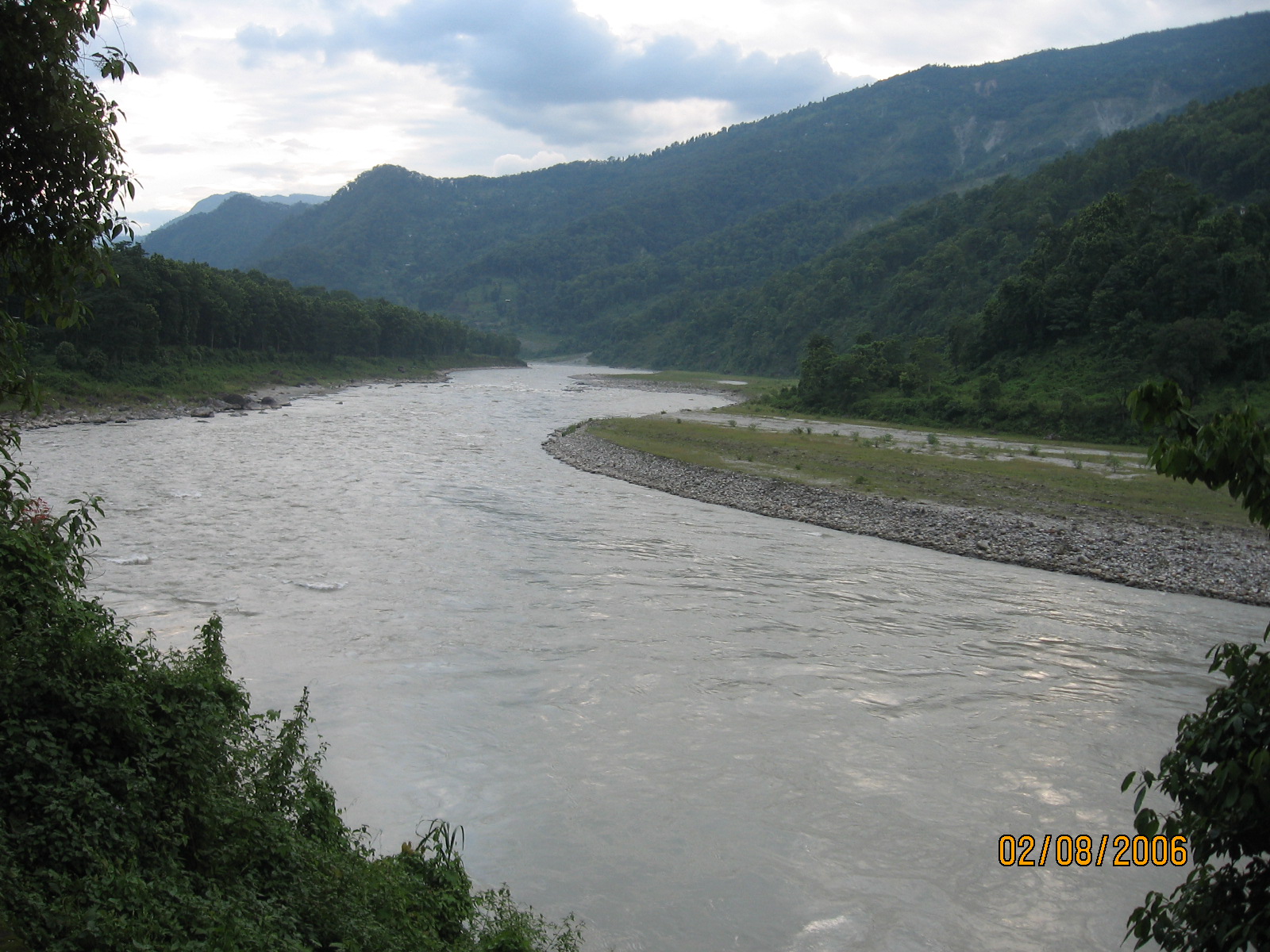


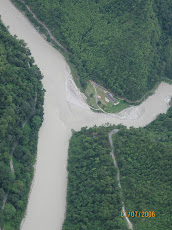
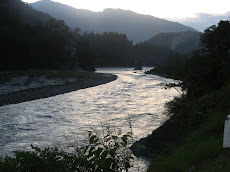
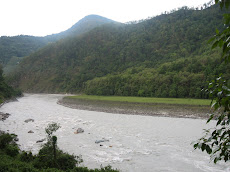
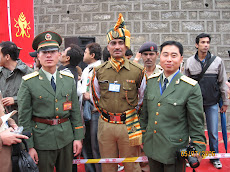





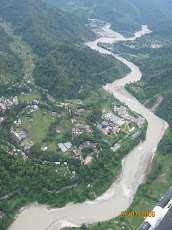




















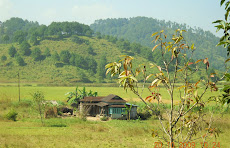
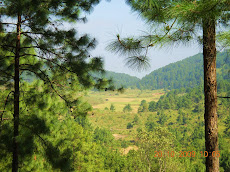








.jpg)








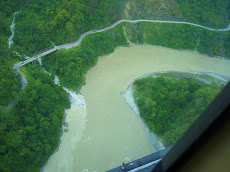


















































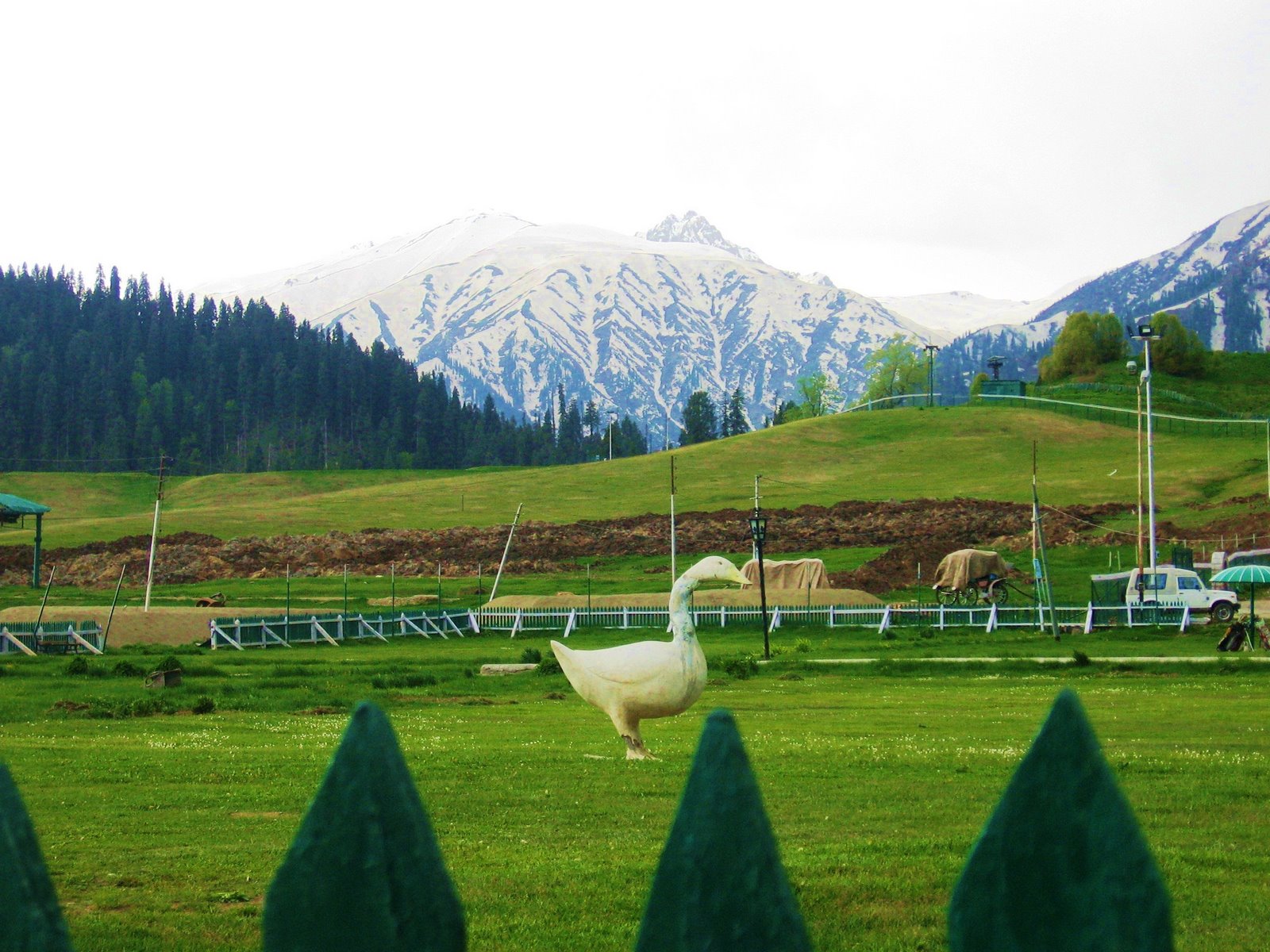
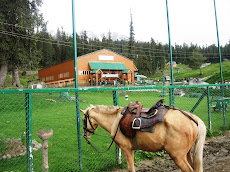
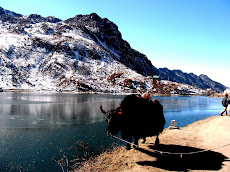












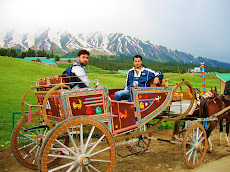












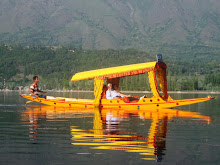
No comments:
Post a Comment